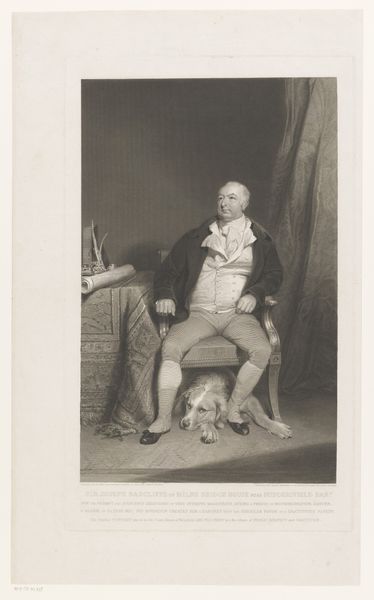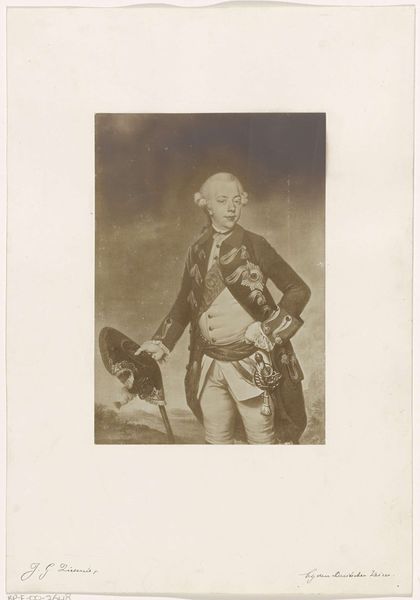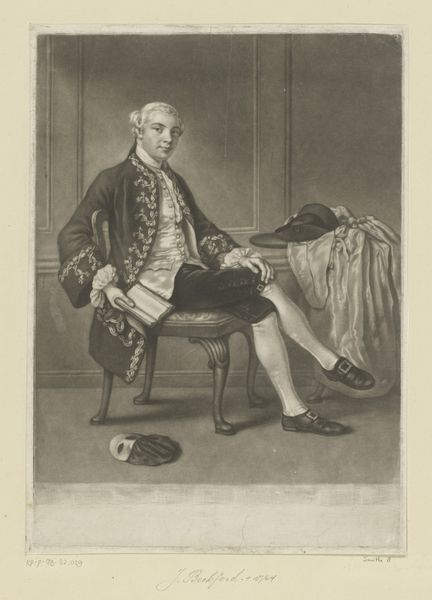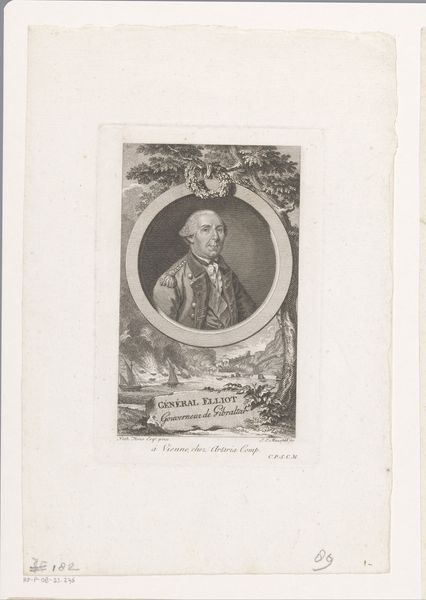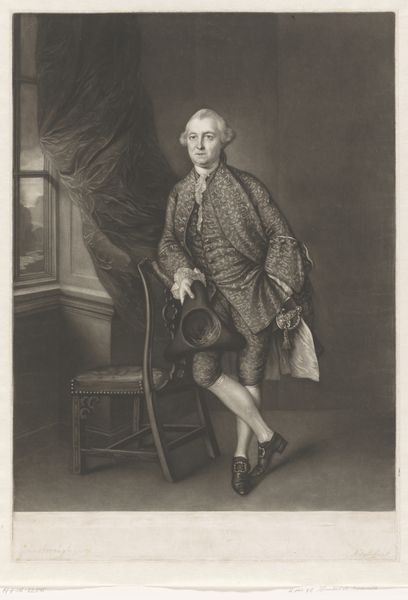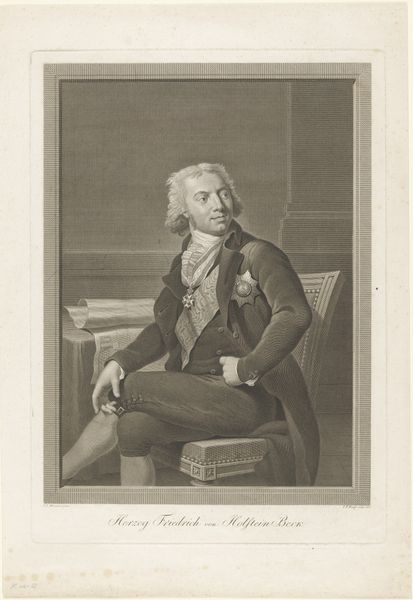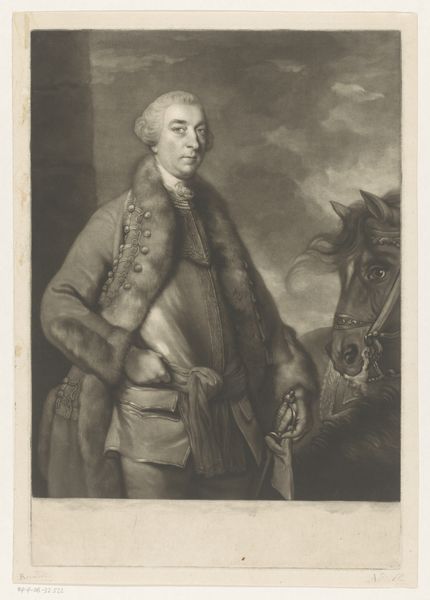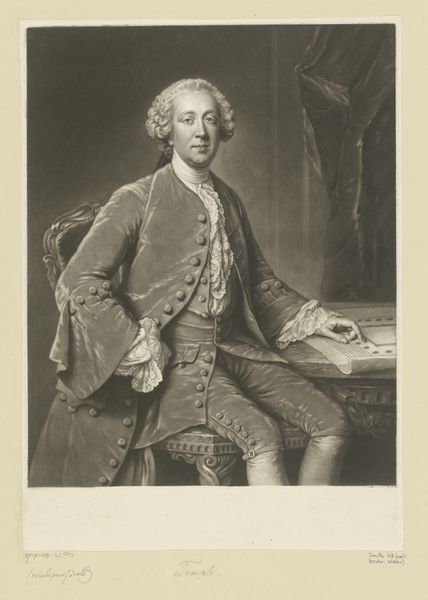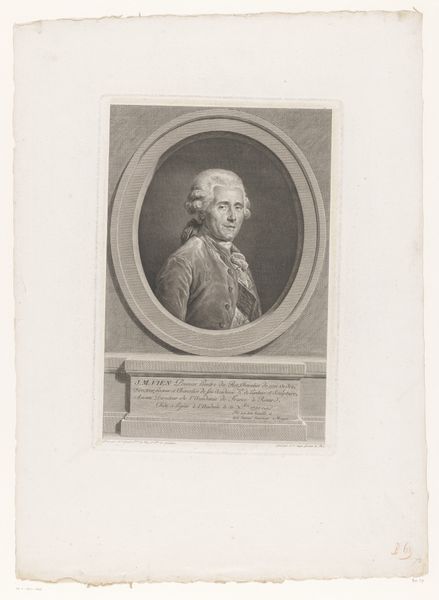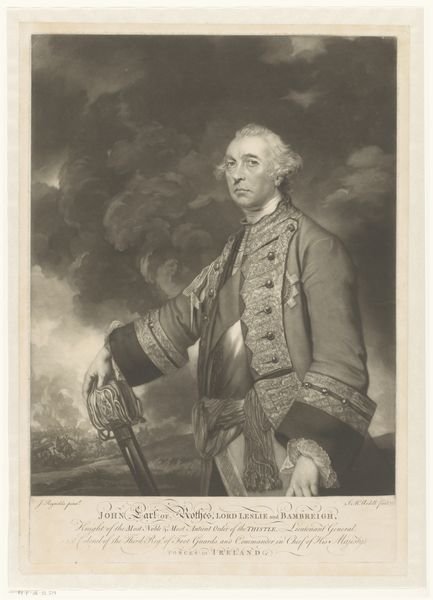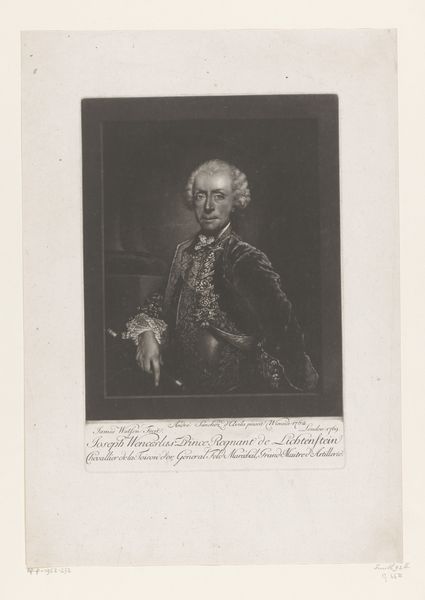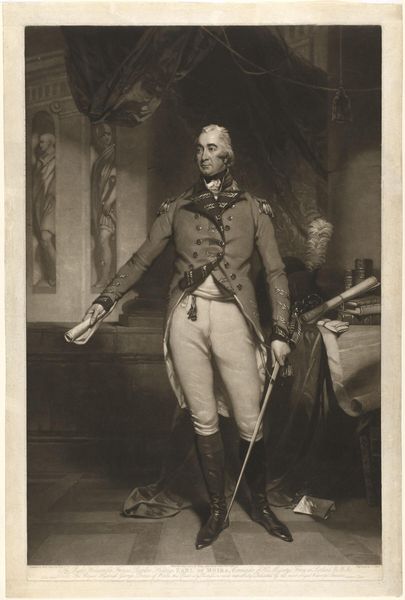
print, engraving
#
portrait
#
print photography
#
neoclacissism
# print
#
history-painting
#
engraving
Dimensions: height 535 mm, width 404 mm
Copyright: Rijks Museum: Open Domain
This is Richard Houston’s portrait of George III, King of the United Kingdom, made as a mezzotint. The image presents us with an intriguing set of questions about the public role of art and the politics of imagery in 18th-century Britain. Houston’s portrait is more than just a likeness; it's a carefully constructed representation of power and authority. Consider the military garb, the regal pose, and the trappings of wealth. These visual cues communicate the idea of a strong, capable monarch, fit to rule an empire. The cultural context is crucial here. This was a time of growing British power, both at home and abroad. The monarchy was central to this project, providing a symbol of national unity and strength. Institutions such as the Royal Academy played a key role in promoting this image, shaping artistic production to serve the interests of the state. To fully understand this artwork, we need to look beyond the surface and delve into the social conditions that shaped its creation. Art history is not just about aesthetics, it's about understanding the complex interplay between art, power, and society. We can explore archives, letters, and other historical documents, to get a richer understanding of the world in which this portrait was made.
Comments
No comments
Be the first to comment and join the conversation on the ultimate creative platform.
